Bibiana Escribano
Occupational Therapist. Specialist in pshycomotricity, music therapy and sensory integration.
Read more postsCurrently, new technologies are playing a fundamental role in improving the health and well-being of the elderly or dependent individuals. Among the numerous innovations and resources for supporting older adults are multisensory rooms. These sensory stimulation and regulation spaces have proven to be a highly effective tool for cognitive rehabilitation, promoting social communication, and overall well-being.
These sensory environments, equipped with advanced technology, offer an immersive and interactive sensory experience. With the correct therapeutic approach, they can have very positive impacts on the quality of life of elderly or dependent people, contributing to improving their health, autonomy, and mood.
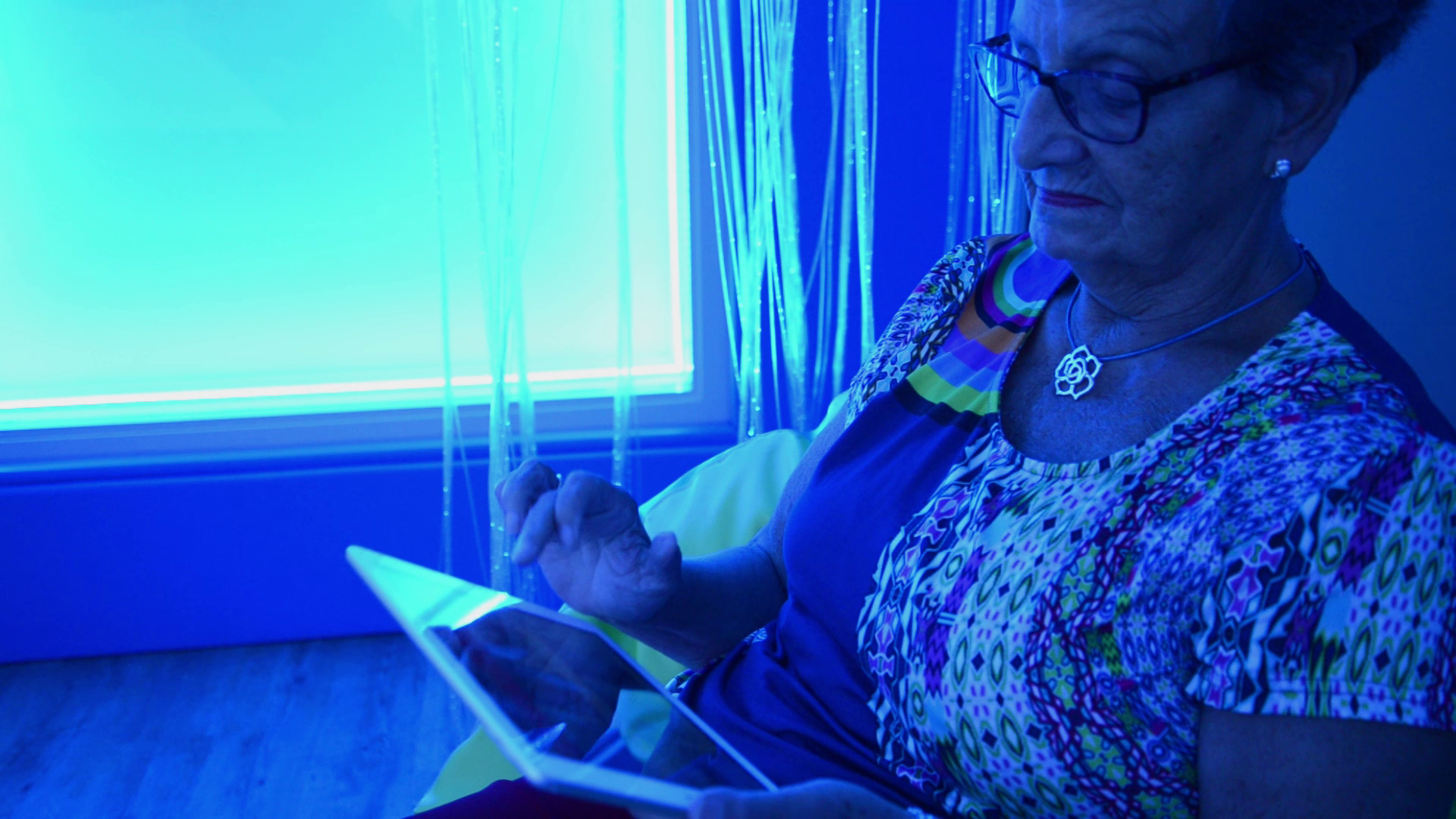
As we age and become more dependent, challenges to our health and well-being can arise. These include the decline in physical, cognitive, and sensory abilities, as well as loss of autonomy or lack of motivation. These challenges can affect the quality of life, mood, motor skills, and social abilities.
Sensory stimulation is a therapeutic leisure and well-being tool that aims to regulate the senses (sight, hearing, touch, proprioception) to improve the physical, emotional, and cognitive well-being of individuals.
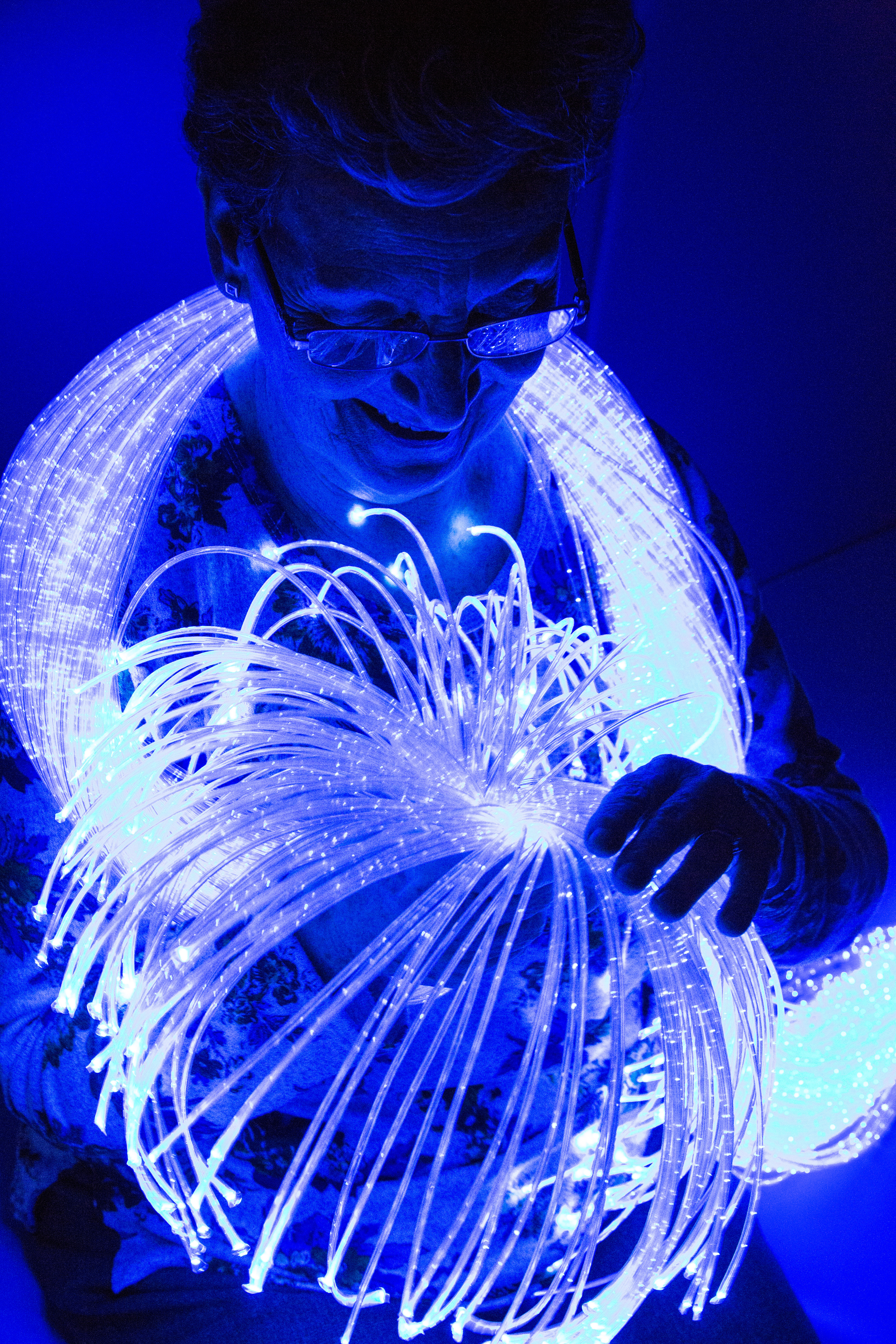
These rooms allow for the activation, calming, or stimulation of the senses in a controlled environment where stimuli are adjustable by the therapist and controllable by the user. Thus, the elderly interact within a space filled with lights, images, sounds, and videos projected on the wall, experiencing various immersive experiences without leaving the room.
For example, they can be transported to a paradisiacal beach with just the press of a button, feeling the wind on their face and the vibration of the waves, or recall daily life concepts.
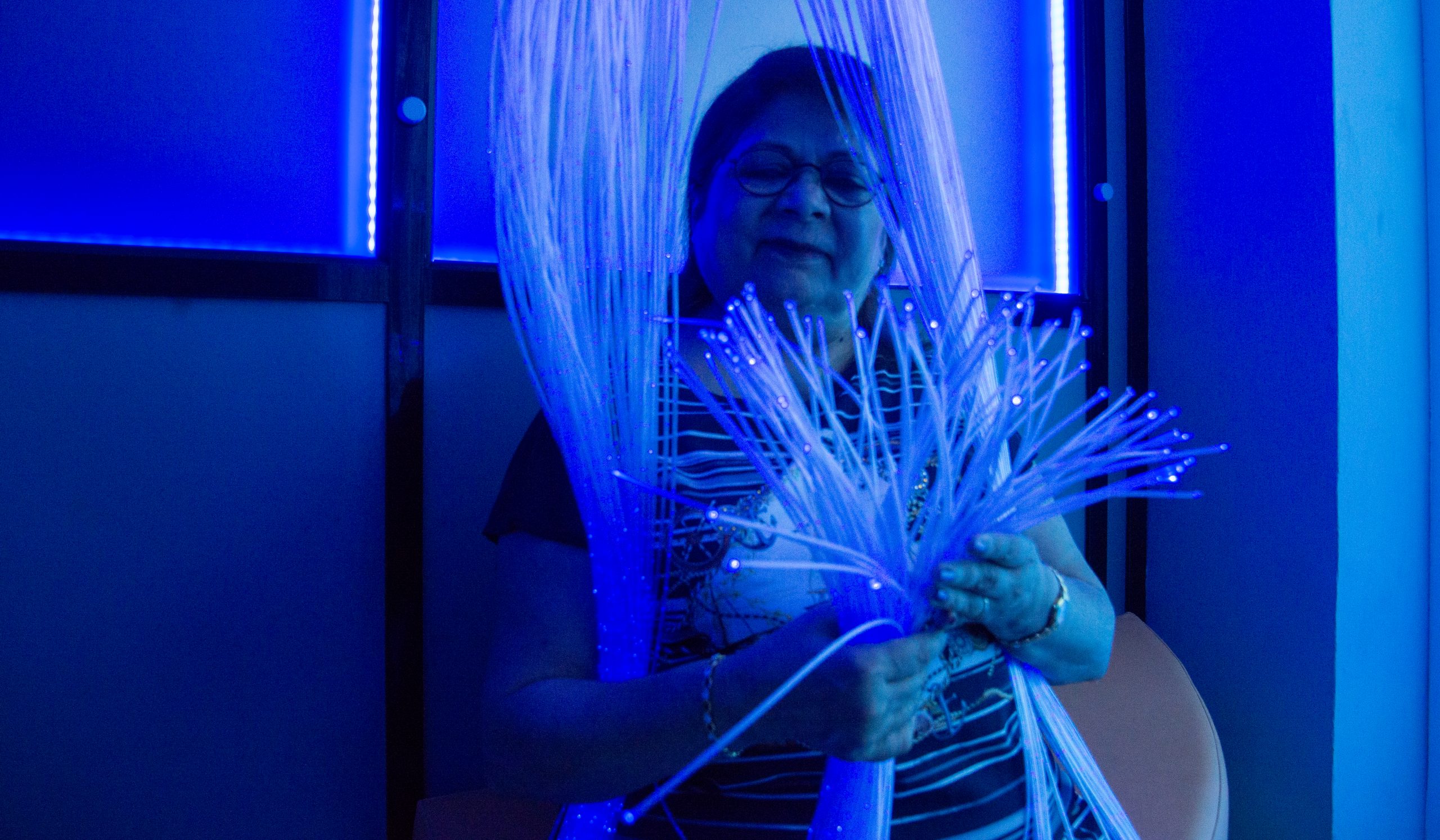
New technologies have revolutionized the way sensory stimulation can be provided to the elderly or dependent individuals. Qinera’s rooms with proprietary technology include elements like Proximity, a small platform where placing any object will project it on the wall accompanied by sounds, music, and lights as configured.
For example, we can place a toy elephant on the Proximity, and it will be projected on the wall while we hear it through the room’s speakers. All the lights in the room turn yellowish (representing the savannah), and the fan activates to make us feel there. We can choose any item, such as a fruit, and use it to remember old recipes or the person’s favorite dish.
These advanced technologies allow for greater flexibility and variety in sensory experiences, as they are fully customizable, adapting to each person’s preferences and needs. We can work on autobiographical memory and recognition by incorporating photographs of family members or old videos. We can also recall daily activities, object names, work on short-term memory, episodic memory, etc.
If you want to learn more about the benefits of Multisensory Environments or see how you could adapt it to your space, therapeutic goals, and users, you can send an email to hello@qinera.com.
Occupational Therapist. Specialist in pshycomotricity, music therapy and sensory integration.
Read more posts
5 July 2024
Aiala Grajirena is a therapeutic pedagogy teacher at San Miguel School (Doneztebe). Since the 2020-21 school year, they have been developing a project for a...
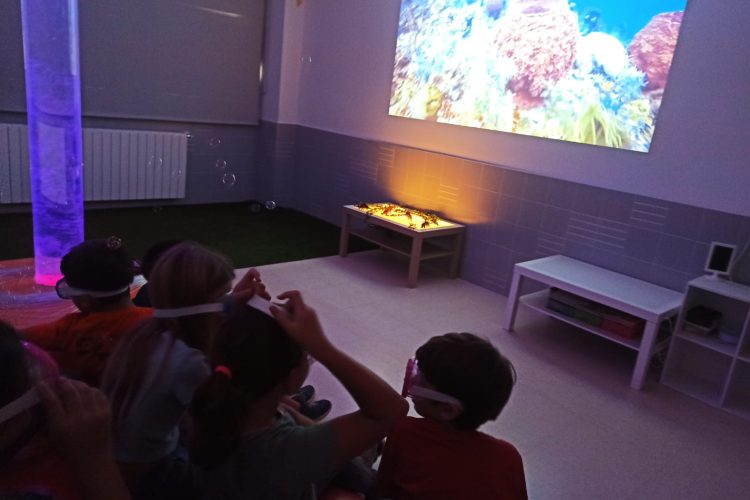
13 June 2024
One of the main questions that arises when considering installing a multisensory classroom in a regular school is whether it is really a good investment....
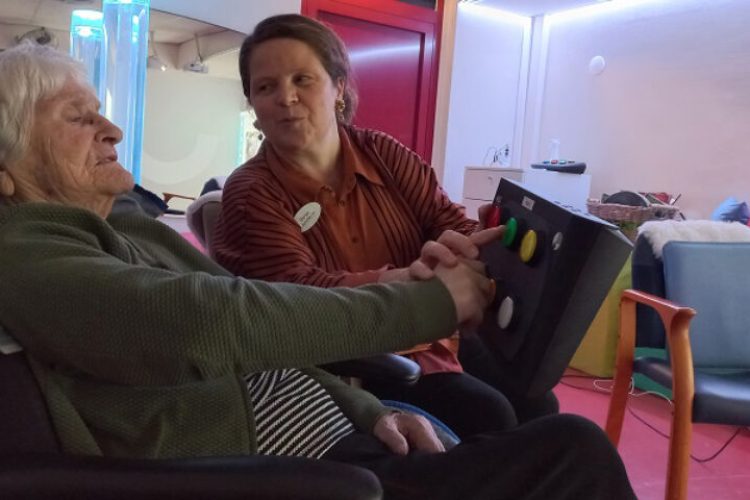
10 May 2024
Recently, the care home De Stichtse Hof, part of Vivium Zorggroep, inaugurated a brand new multisensory room with the interactive Qinera technology. This technology combines...